Let's Talk About the Smallest Cars in the World: Peel P50 and Peel Trident
These cars have gone down in history as the most compact production automobiles in the world, and this record remains unbeaten.
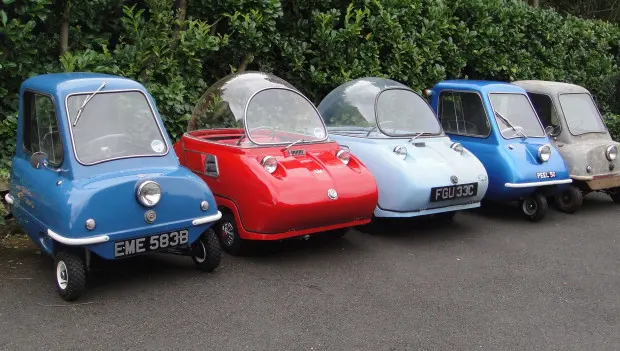
In the 1960s, two unusual cars appeared on the roads — the Peel P50 and Peel Trident. Despite their tiny sizes, they have gone down in history as the most compact production automobiles in the world, and this record remains unbeaten.
Minimum Space — Maximum Functionality
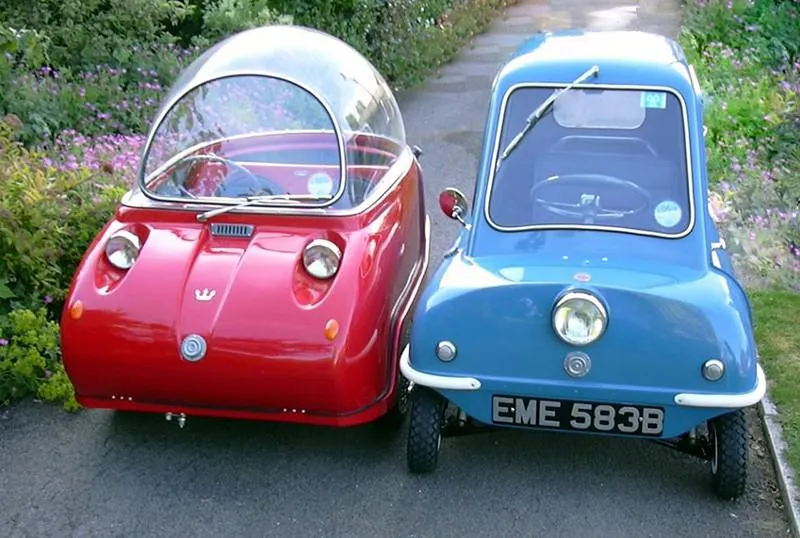
Red Peel Trident and blue Peel P50
Both models were equipped with three wheels with a diameter of just 13 cm, one door, and an interior that barely fit the driver (who was also the sole passenger). However, there was space under the seat for a small amount of luggage — for example, a travel bag.
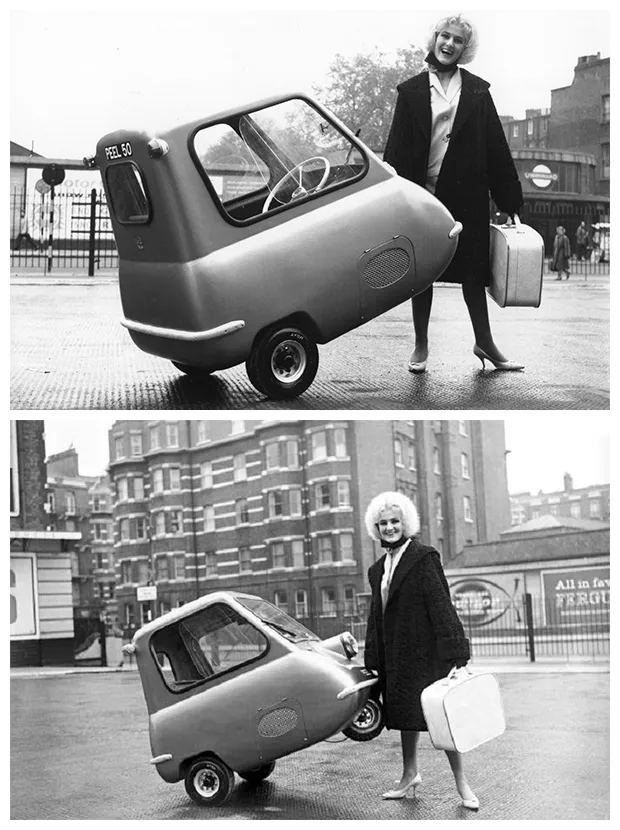
The engine in the Peel P50 was motorcycle-based: two-stroke, 49 cc, which allowed for a speed of up to 61 km/h (although the officially stated speed was 45 km/h). Originally, there was only one headlight, which added to the car's resemblance to a motorized rickshaw.
Future City Transport… from the Past
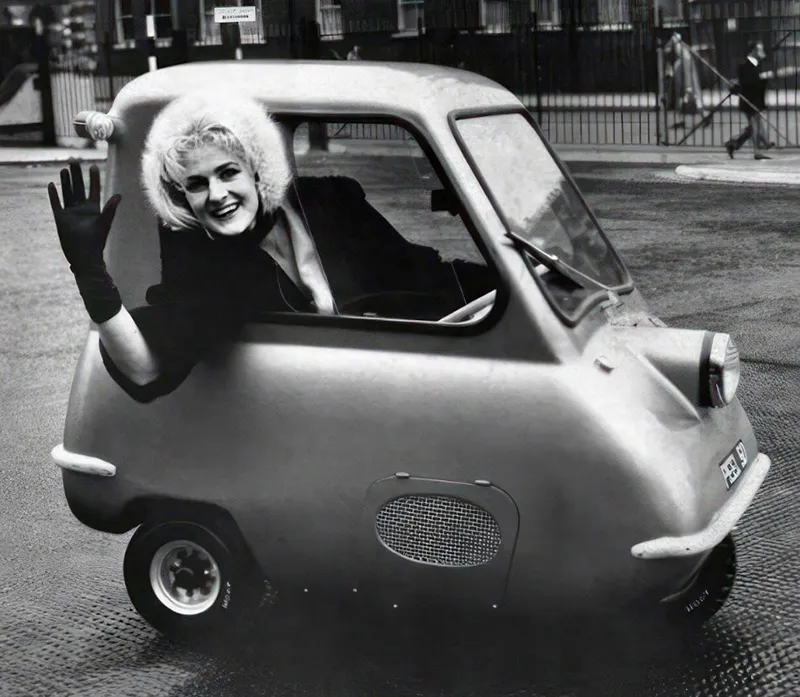
Due to its dimensions (P50 length — only 1.37 m, weight — 59 kg), the car could literally be rolled along like a suitcase. Owners boasted that they could easily navigate traffic jams and park even in the tightest of spots.

It's no wonder that the Peel P50 and Trident were quickly dubbed "toys for grown-ups." However, in 2007, Jeremy Clarkson from Top Gear proved that they could be driven for real.
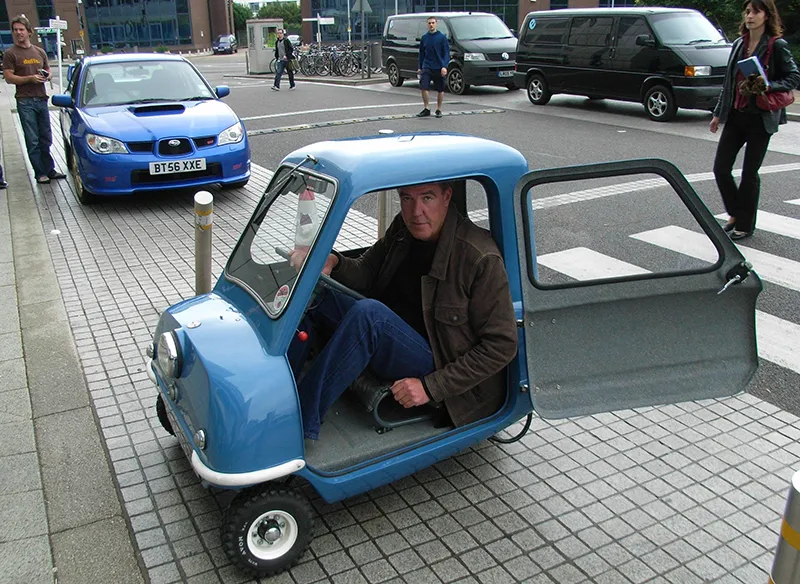
At a height of 198 cm, he managed to squeeze into the cabin and drove through London, causing excitement among the audience.
The "Flying Saucer" Trident

The Peel Trident model (1964) was a development of the P50 idea. It was dubbed the "flying saucer" due to its dome-shaped design, but it certainly didn't reach the level of a real UFO.
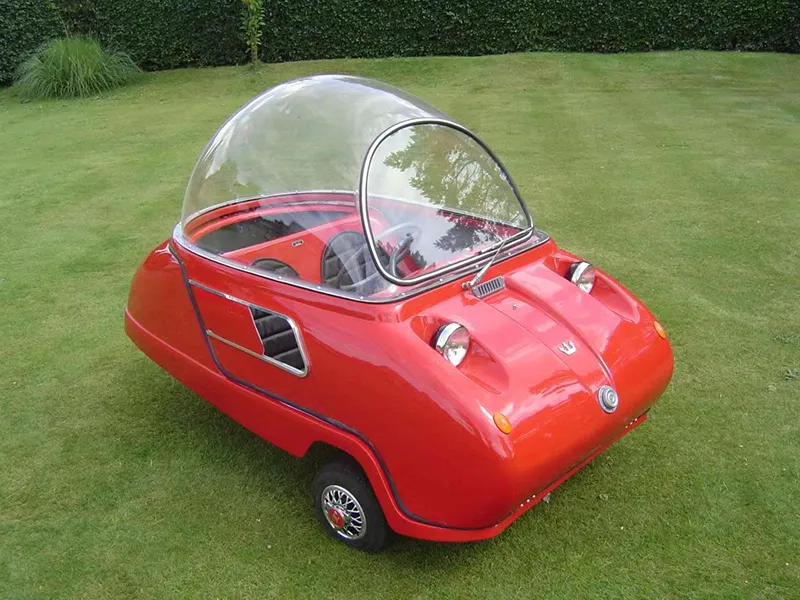
Both small models cost around £199 (approximately £4000 in today's money) and could accelerate up to 61 km/h. Today, they are considered the prototypes of urban micro electric vehicles — who knows, perhaps models like these will become relevant again in the future.
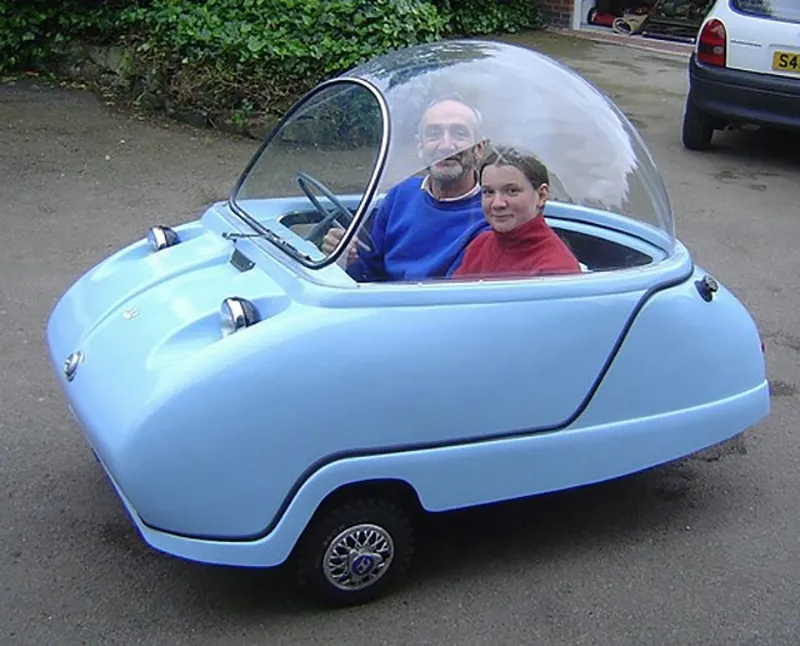
You may also be interested in the news:

What the Colored Dots and Stripes on New Tires Actually Mean
All those numbers, letters, and markings—they all have a purpose.

Why Henry Ford Ordered the Corners of His Factories Painted White
A century ago, automotive pioneer Henry Ford demanded all sorts of unusual things from his workers.
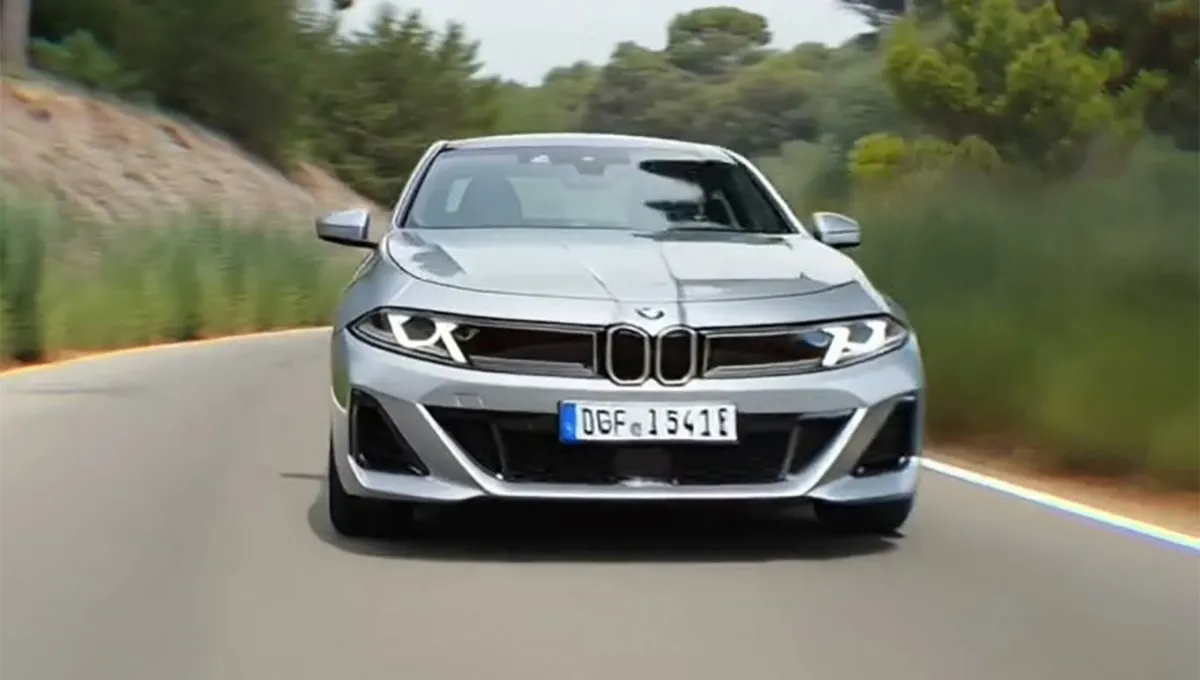
BMW Unveils Bold New Front-End Design for Upcoming 5 Series
BMW 5 Series promises a striking, divisive look that’s sure to spark debate among fans and enthusiasts alike.

Why the Popular Lubricant Is Called WD-40—and Not WD-50 or WD-100
Seasoned drivers know this little miracle spray can bail you out of an unbelievable number of car troubles.

Mystery Button Hidden Under Most Car Dashboards — And Why So Many Drivers Don’t Know It Exists
Modern cars are packed with features and buttons whose purpose can be surprisingly hard to guess.